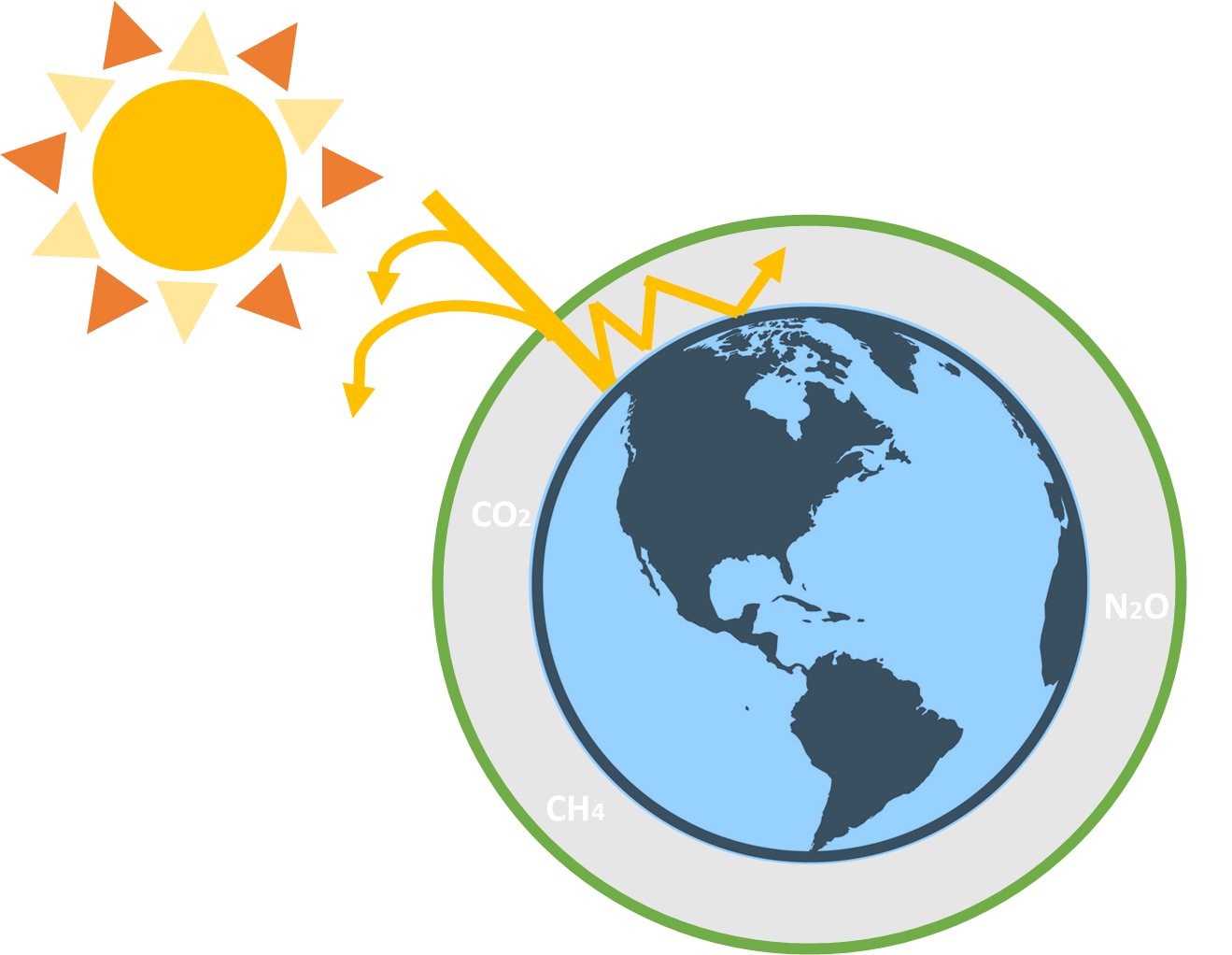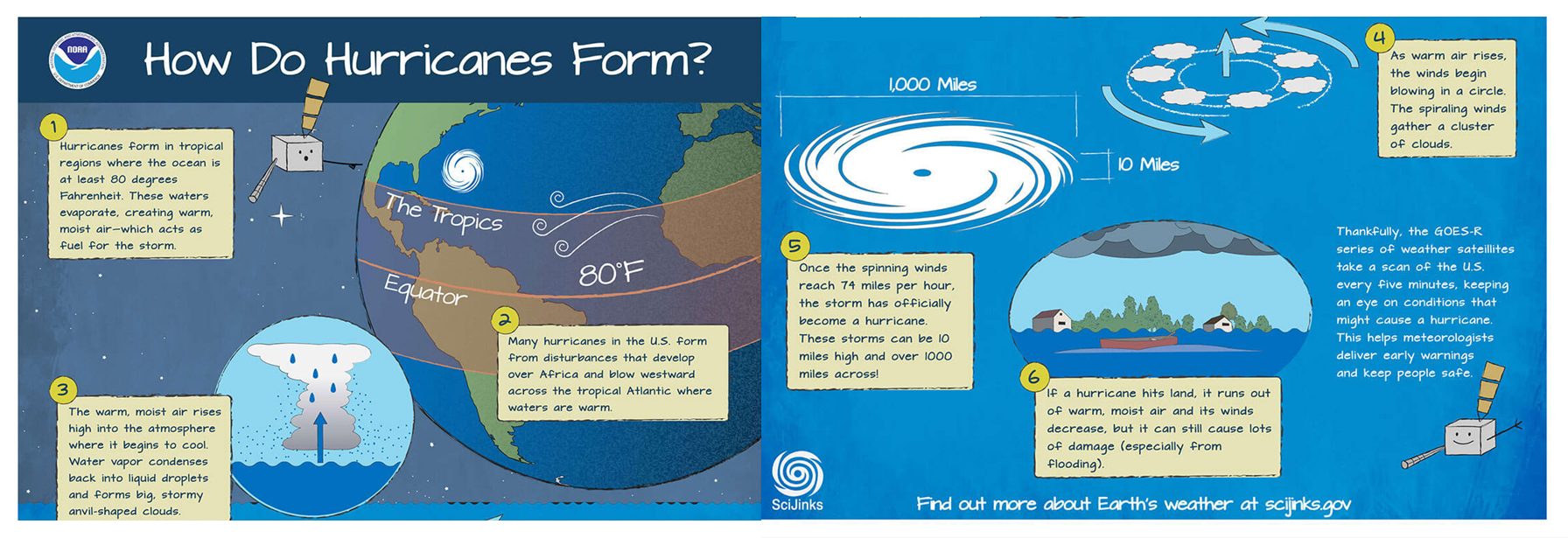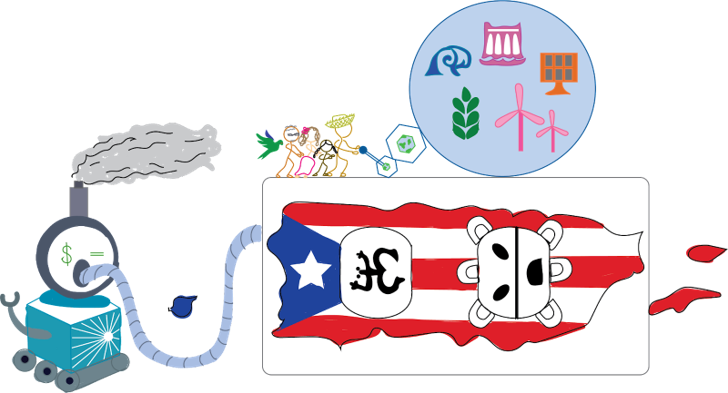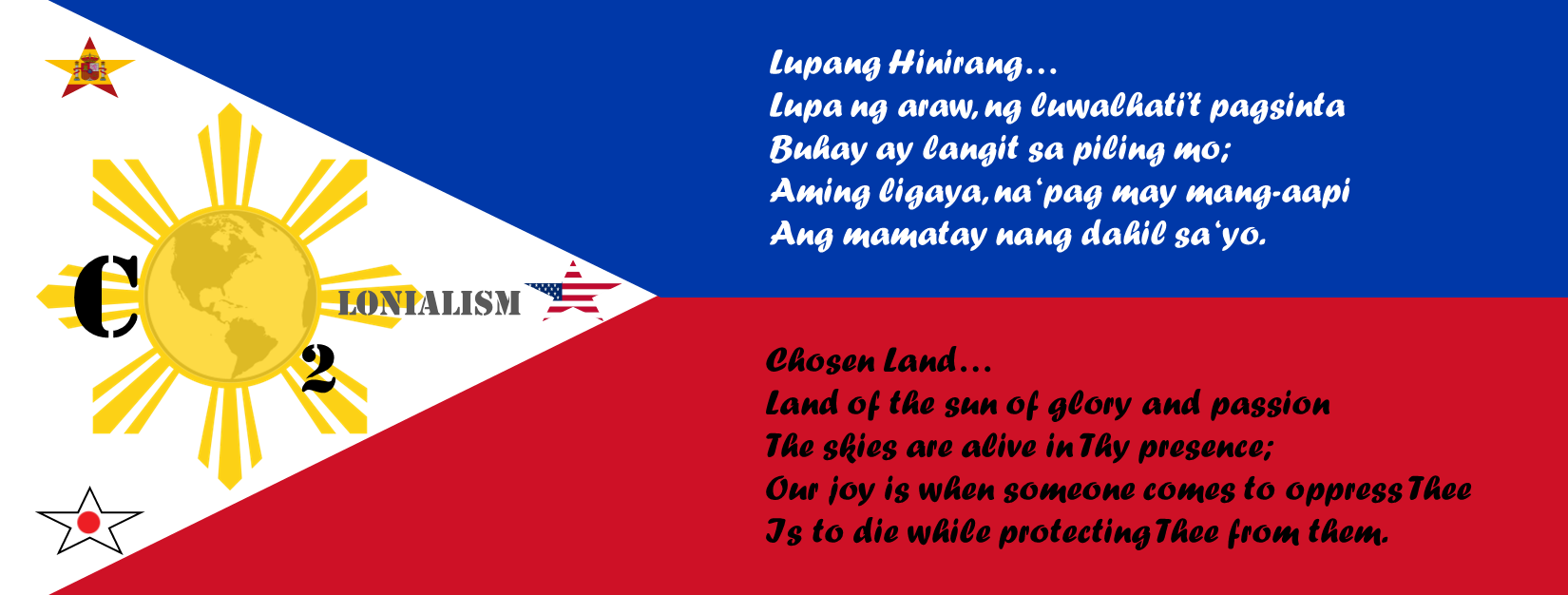Lupang Hinirang – the Filipino national anthem. Following the landfall of Super Typhoon Yolanda in the Philippines on November 8, 2013, it was a song that kababayans held close to their hearts from Luzon to Mindanao. My home country is Paraiso for many only under blue skies, but for Filipinos, it is our Chosen Land even in the aftermath of a storm. On September 18, 2022, Hurricane Fiona made landfall along the southwestern coast of Puerto Rico. Regions of the island received as much as 35 inches of rainwater, 100% of the island lost power, and the vast majority of the population endured days without water. The recent storm arrived on the island just two days ahead of the five-year anniversary of Hurricane Maria, re-opening wounds from 2017.
It is not my place to speak on these experiences nor to appropriate the situation through the lens of my personal accounts. However, the stories of Fiona and Maria echo the sentiments of frustration, hurt, and anger from 2013 in knowing that the storm passing is not where it ends. Regardless of one’s distance from the island, there is an indescribable sense of grief in seeing the place you know as home and the people who make it feel as such endure indefinite uncertainty. There is mourning for the reality that once was, at a funeral that you are unaware of when or even if it will end. It is one thing to wake up in the aftermath of a storm. It is another to not know what comes next and to feel no power in dealing with the consequences of things beyond your control. And no, it is not just the forces of nature that we are talking about. Typhoons, downpours, cyclones, and hurricanes are indeed forces of nature. But there is nothing natural about the inequities, social disparities, and marked levels of injustices that are pronounced in a storm’s passing. That is all human-made.
As global temperatures continue to rise due to climate change, scientific studies report increased frequency and intensity of extreme weather conditions. Earth is currently experiencing heat waves at 3 times the annual rate seen in the 1960s, total precipitation has been increasing 0.2 inches per decade across the US since 1901, and average global temperatures have risen by 34.2 degrees Fahrenheit since 1880. The greatest escalation of temperatures occurred within the 20th century. Rising global temperatures may be explained by the “greenhouse effect.” Greenhouse gases such as CO2, methane, nitrous oxide, and fluorinated gases makeup only a small fraction of the Earth’s atmosphere but significantly impact climate. Earth’s temperature is a function of the energy the earth absorbs from the sun, which causes heating, and the energy Earth emits into space as infrared radiation, which allows for cooling. Like glass in a greenhouse, greenhouse gases trap radiation and prevent its return to space. These gases temporarily absorb some of the outgoing infrared radiation and re-emit it in all directions, sending some of it back toward the earth’s surface which causes the plant to heat up. The Industrial Revolution was a major catalyst in climate change, as human activities such as the burning of coal, oil, and gas increased the levels of greenhouse gases in the atmosphere. Evidence of human-induced global warming has been seen in bubbles of ancient air trapped in ice pre-dating 1750. At that time, the atmospheric concertation of CO2 was 280 parts per million (ppm – the mass of a chemical or contaminant per unit volume of water), which later passed the 300 ppm threshold in the 1900s, and currently sits at over 420 ppm due to emissions from cars and electricity.

Considering that about 71% of Earth’s surface is covered by water, it is important to recognize the implications of rising temperatures on storm development. Water temperatures above 80 degrees Fahrenheit supported by moisture and uniform winds can evolve into a tropical storm system. When wind speeds reach above 74 mph, the storm system is deemed a hurricane. Warmer sea surface temperatures mean hurricanes have greater potential to gain intensity quicker and can generate 10% to 15% more precipitation. Furthermore, the warming of the Arctic may be contributing to increased “stalling” of hurricanes, subjecting coastal regions to longer periods of high winds and higher total rainfall. Consequently, coastal communities have less time to prepare and, as seen with Hurricane Fiona’s impact on Puerto Rico, will face severe flooding. With this trajectory of climate change, one can infer that consistently elevated global temperatures may result in more frequent major storms—giving nations less time to rebuild fatigued infrastructures to face the next weather event. The data point to increased hurricane rates over the past 150 years; however, some studies argue that this is merely a result of improved surveillance. A recent study from MIT tested this hypothesis by performing “dynamical downscaling,” which involved inputting real-world data into a high-resolution model to reverse engineer past hurricane data. Outstandingly, the model showed a large increase in hurricane activity in the Atlantic since the mid-19th century, even accurately matching a “hurricane drought” in the 1970s and 80s.

It is true that the effects of climate change will be experienced across the globe; however, this crisis will only exacerbate existing inequalities. The Germanwatch Observatory measures countries’ vulnerability to the direct consequences of extreme weather events via the Global Climate Risk Index. The most recent report lists Puerto Rico, Myanmar, Haiti, the Philippines, and Pakistan as the five nations most affected by climate change this century. Countries most vulnerable to the economic shock of climate change, such as India and Southeast Asia (Philippines, Indonesia, and Malaysia) rely heavily on their agriculture sectors for their Gross Domestic Product (GDP – the value of final goods and services produced in a country in a given amount of time; used to measure the size of an economy). Apart from geographic susceptibility to extreme storms, these countries lack fiscal resources and political stability to build resilient infrastructure. In contrast, Finland, Switzerland, and Austria, among other countries in the Global North, not only benefit from less exposure to adverse weather patterns but are also much better equipped to face the climate crisis. These countries are well-equipped with research and development spending which can be dedicated toward climate-resilient infrastructure and green technology innovation.

The economies of wealthier nations stand in the eye of the hurricane, able to watch surrounding countries enduring the full force of the climate change storm. How were they afforded this position?
Fossil fuels were being burned in the 19th and 20th centuries at an unprecedented rate, powering the economies of wealthy nations in the Global North. On the other hand, many countries across the Global South remained largely impoverished. This inequitable economic boom was the ripple effect of colonialism. Spain, Portugal, and the Vatican divvied up Africa, the British imposed power structures allowing for “indirect rule” in Africa and much of Asia, and US colonialism claimed islands outside of the United States, including Hawai’i, Puerto Rico, and the Philippines following Manifest Destiny. Colonies were robbed of their natural wealth, subjecting them to the influences of political and economic leverage under neo-colonialism. The same pattern can be observed in this new age of climate colonialism—in which wealthier, well-resourced countries in the Global North exploit the resources of the Global South for their green agendas. It is not by chance that nearly half the world’s population is still trying to escape poverty while facing the most severe consequences of climate change. The vulnerability of lower- and middle-income countries in the climate crisis is not due to a deficit on their part: it is not a lack of intellect or innovation, nor is it due to their inability to “self-govern.” These nations—these people—are facing major forces beyond their control: the forces of nature and power structures engineered with social injustices.

A 2017 report found that 70% of the world’s greenhouse gas emissions since 2015 can be attributed to just 100 fossil fuel producers. Across 86 countries, the richest 10% of people consume approximately 20 times more energy than the poorest 10%. The United States alone is responsible for 25% of all CO2 emissions since 1751, and yet, the US along with the wealthiest countries in the world are not the ones to bear the most severe consequences. Global income inequality is being further exacerbated by climate change. Developing nations are unable to afford many of the projects necessary to mitigate the effects of climate change. Today, fossil fuels still remain among the cheapest ways to power economic growth, which makes it hard for developing countries to give up. Do wealthier nations not have a moral obligation to provide the money, resources, and technology to developing countries after reaping the benefits of economic development through industrialization? Do these counties not bear responsibility in moving towards a more sustainable future without pushing the most vulnerable further into poverty and inequity?
Apart from the question of social responsibility across countries, the conversation around addressing inequities exacerbated by climate change applies to social gradients within a country. Miami has committed to spending at least $3.8 billion over the next 40 years to keep the city dry amid rising sea levels. Funds will go toward implementing one hundred new mega stormwater pumps, establishing six-foot tall sea walls, installing thousands of injection wells and underground pipes, and raising streets by two feet to combat the effects of climate change. Just about 1000 miles from Miami is Puerto Rico, which has been a territory of the US since 1898.
In the aftermath of Category 4 storm Hurricane Maria in 2017, Puerto Rico’s power grid collapsed, and citizens were left without power for several months. An earthquake in 2020 again caused widespread power outages which shifted the island toward relying more heavily on petroleum. Although Puerto Rico utilizes solar, wind, hydropower, and biomass renewable energy, in 2021, 97% of the island’s electricity was generated by fossil fuel-fired power plants. Despite multiple studies showing the viability, reliability, and economic benefits of on-site/rooftop solar and battery storage systems, administrative bureaucracy and corporate agendas have hindered a full-force transition to renewable energy which would make people less vulnerable to outages, including those caused by storms such as Fiona. The Puerto Rico Electric Power Authority (PREPA) is a government agency that previously owned the island’s electricity transmission and distribution system. Most of PREPA’s power plants were concentrated along the south of the island, which restricted the efficiency and sustainability of their system. Despite attempts to launch renewable energy projects through renewable contractors, the Fiscal Oversight Management Board (FOMB), established by the US Congress to restructure Puerto Rico’s debt, rejected the projects as they exceeded PREPA’s fiscal plans. As part of the restructuring plan, parts of PREPA were approved for privatization and in 2020, LUMA Energy was selected to take over PREPA’s generation assets and electricity system in an effort to modernize Puerto Rico’s electricity transmission system through a 15-year public-private contract partnership.
Although LUMA Energy was supposed to bring about a modernized electrical system, this company was responsible for the complete loss of power across Puerto Rico. Hurricane Fiona, a Category 1 storm, did not cause an equivalent collapse of utility poles seen with Hurricane Maria, yet LUMA failed to deliver energy to over three million Puerto Ricans, impacting even hospital electricity grids. Unfortunately, this is not the first time that LUMA has failed, and their negligence has threatened the safety of people across the island who suffered from burns and poisonous fumes when trying to operate electric generators. Privatization of the power grid with LUMA has only contributed to the power crisis leaving many without power and feeling powerless. Even with poor service, Puerto Ricans pay some of the highest electrical rates at 33.4 cents per kilowatt-hour. On an island where the median income is $21,000, this adds up to about 8% of income. The FOMB has further worsened poverty on the island by imposing austerity measures including education funding cuts, school closures, and reductions in public sector pensions.

In hopes of driving the island’s economic development, the Applied Energy Services Puerto Rico (AES-PR) project resulted in the Virginia-based company opening an 80-acre coal plant near Guayama, Puerto Rico in 2002. Under the 2019 Puerto Rico Energy Public Policy Act, PREPA is required to phase out coal-fired generation by 2028 and convert to 100% renewable source energy by 2050. However, this may prove too distant of a timeline for the island with the impending harms of toxic coal ash. When coal is burned to produce electricity, a by-product rich in arsenic, radium, and other carcinogens known as coal ash is left behind. Since the plant’s opening, coal ash has contaminated Puerto Rico’s air, soil, and water. The University of Puerto Rico’s Graduate School of Public health reported doubled rates of cancer and respiratory illnesses in surrounding communities in a 2016-2018 study. Today, 1 in 10 people in Guayama have been diagnosed with cancer. The operating contract between AES-PR and PREPA is set to last until 2027. Since its opening, the plant has generated 800 tons of coal ash per day, which at one point, led to a 12-story-high pile sitting atop the South Coast Aquifer—the central source of drinking water in Puerto Rico. Following reports on the detriment the plant has on Puerto Rico’s health, plant owners have grown amenable to closing the plant. However, the executive decision will come down to LUMA’s input. PREPA representatives have been insistent on holding out until the end of the contract in 2027 before transitioning toward more renewable energy technologies to maximize profits. Government inaction toward the island’s public health and sustainable energy plans are fueled by corporate influences like Alex Epstein, an influential advocate for fossil fuels, suggesting that: “The one thing that will most help the people of Puerto Rico lift themselves out of crushing poverty is the thing many of you believe should be eliminated, and that’s low-cost reliable fossil fuel energy.” Puerto Rico deserves better. All nations and people facing the greatest environmental threats deserve better.

Geographic location, political history, social standing, and economic status do not determine the humanity of a people. Therefore, the people of Puerto Rico, the Philippines, Haiti, Pakistan, and every nation facing the greatest burdens of climate change are entitled to the same fundamental human rights as those across Finland, Switzerland, and every nation well-resourced to brave the storm. The effects of climate change impact human rights to health, to food, to water and sanitation, to adequate housing, and to the right to life. Furthermore, these nations are entitled to their human right to self-determination—to freely pursue their economic, social, and cultural development, without fear of or obligation to any other governing body. It is unfair for the world to merely expect and commend resilience in the face of adversity as resilience is no replacement for the fulfillment of human rights. Resilience cannot deliver people from systems of inequity and injustice.
Peer Editors: Fanting Kung and Maria X. Cardenas
